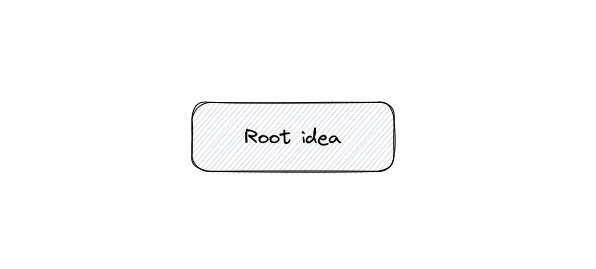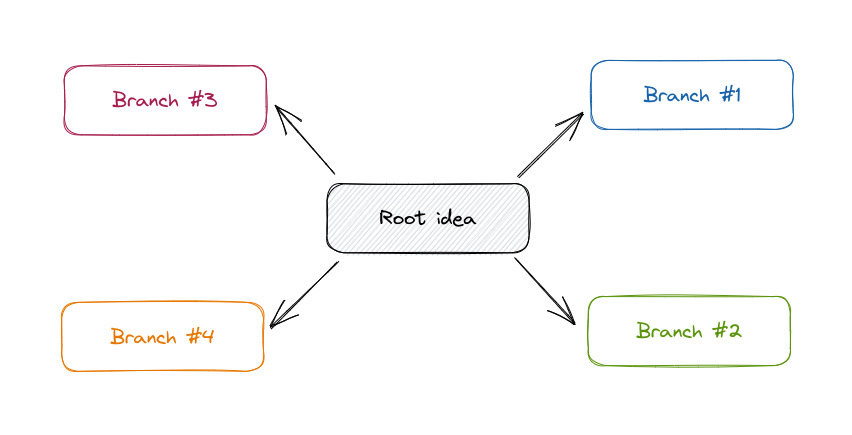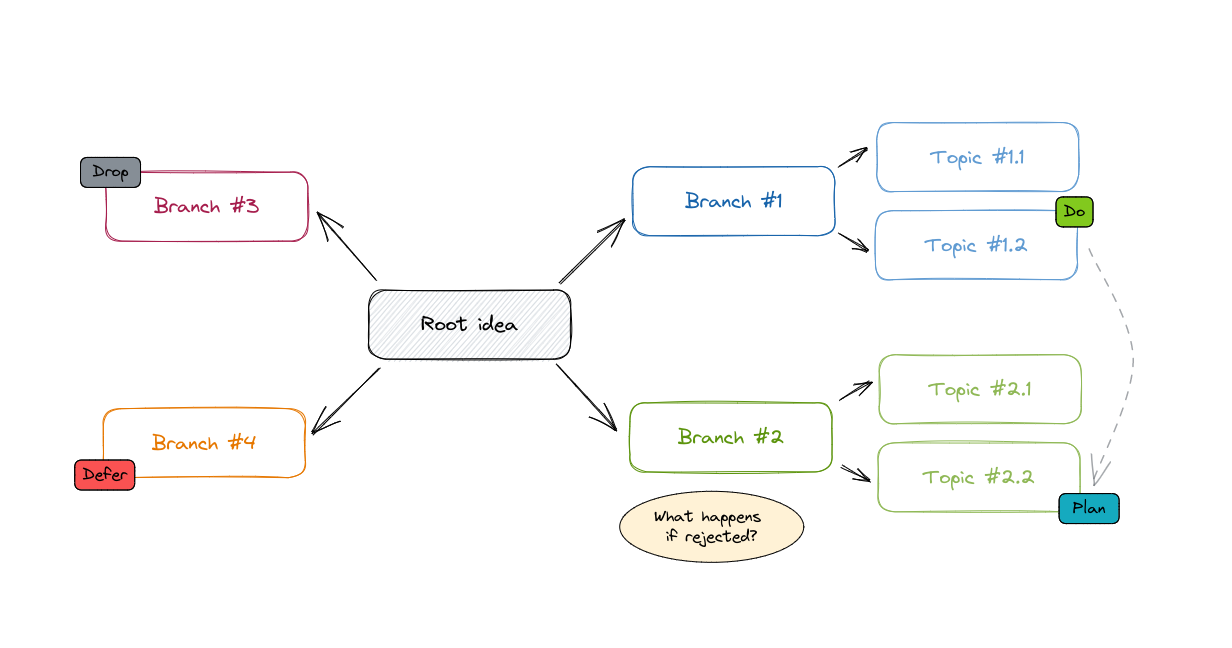What you’ll need
- Pen and paper, or
- A mindmapping application:
- Excalidraw
- Obsidian
- Miro
- XMind
- Microsoft Powerpoint / LibreOffice Impress
How it works
- Start with a root idea.
- Connect new ideas based on that one.
- Review the entire map.
- Associate distant ideas with new ones as applicable.
- Make decisions along the way.
Benefits
- Deeply explore your ideas
- Create new ideas
- Gain clarity
- Improve your decision making
Explanation
How often do you feel like your thoughts are scattered, like a puzzle, and you’re not sure where to start? When you brainstorm ideas with others, feeling overwhelmed and not knowing how to make sense of them? Or maybe you’ve got a big project, or a presentation coming up, and taking linear notes just doesn’t seem to do the trick?
Mindmapping is a visual technique that mirrors the way our brains naturally work, making it a fantastic tool for enhancing creativity, improving memory, and boosting productivity. It’s like having a GPS for your thoughts, guiding you through the landscape of your mind, and helping you explore new pathways of thinking. We’ll explore the technique of outlining, how it can be used, and share practical tips to evolve your thought process.
As usual, my thoughts are very practical and based on experience. I use mind mapping frequently as product manager and coach alike due to it being so simple in nature and yet so interesting to develop new thoughts on. There are a lot of different scenarios you can use it on:
- Generating feature ideas for a product
- Brainstorming solutions for a problem
- Vision boards
- Planning
- Affirmation stories
- Sketching
The main difference from outlining is that mindmapping is a lot more visual. The way you position items in the map grants you a new dimension of thought and empowers you and the people around you to engage more effectively.
Let me give you an example of how to create a mindmap. It’s very simple to get started. All you need is pen and paper, and you can use a flipchart or a whiteboard if you have it.
It starts with a root idea

A mind map always starts with a root idea. It it is the core of the entire thought process. This root idea can have multiple different formats. Here are some examples:
- When writing a novel, the root idea can be “Novel plot”.
- When writing an academic paper, the root idea can be “Outline of the paper”.
- When brainstorming as a team, the root idea can be “How to improve our team’s process”.
- When thinking a business strategy, the root idea can be “Strategies for business expansion”.
Expand on your ideas
From the moment you define a core idea, you’re free to expand on that theme any way it fits your style. Some people like to start going super deep on one specific topic at a time, others like to slowly explore one level at a time as wide as they can.


If you’re on a team setting, the process can be taken with multiple people taking notes at the same time. It empowers everyone to share their ideas, which enables the most potential to be brought out. When so many people bring the idea that everyone has the ability to contribute to an initiative, this is what it looks like.
Sometimes it’s important to set a timeframe for exploration, particularly in a group setting. Imagine you’ve locked some time with your team for the mindmapping exercise. The time constraint creates a condition for the group to focus on the most important and/or urgent.
Review and make decisions
At one point, you’ll reach a bigger or smaller map of the ideas that answer to the root idea. You now have a reason to acknowledge the success of the exercise. The whole point of a mind map is to bring out all possible ideas for a topic that was otherwise unclear or downright unexplored. Clarity is the primary outcome for a mind map, which then leads to another very important outcome: the improved ability to make decisions.

Because mindmapping is freeform, your creativity shapes the process, and you bring in as much information as it’s revelant for the exercise, whether it’s new ideas, decisions, follow-ups, questions, associations, etc.